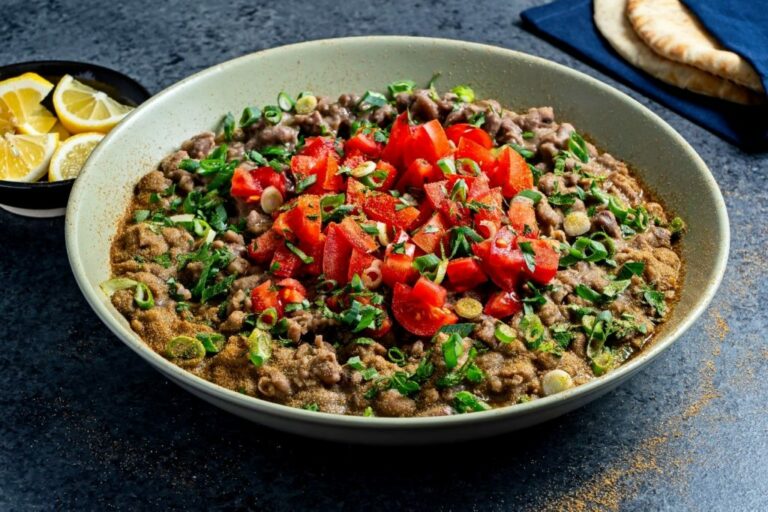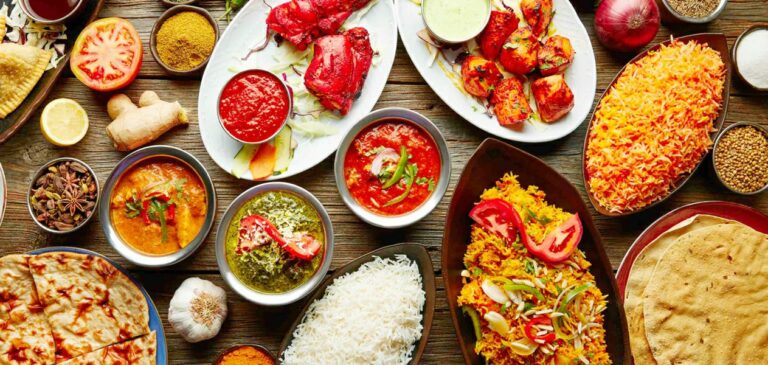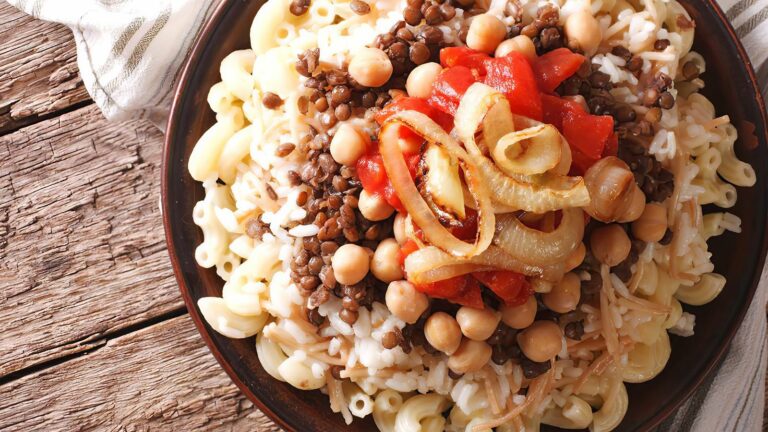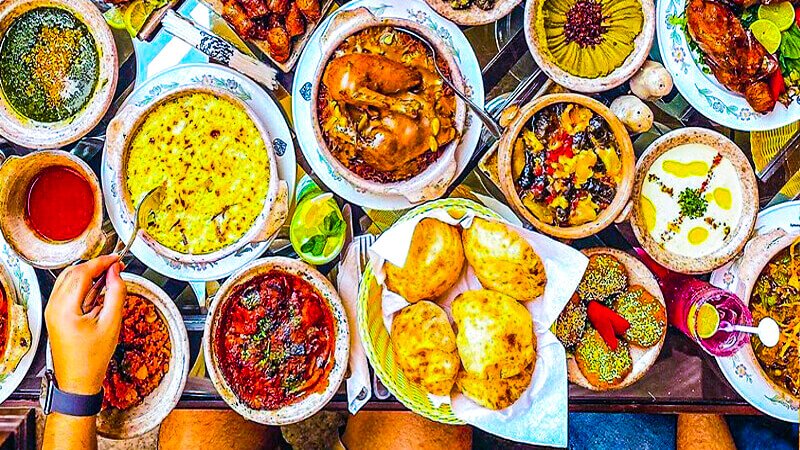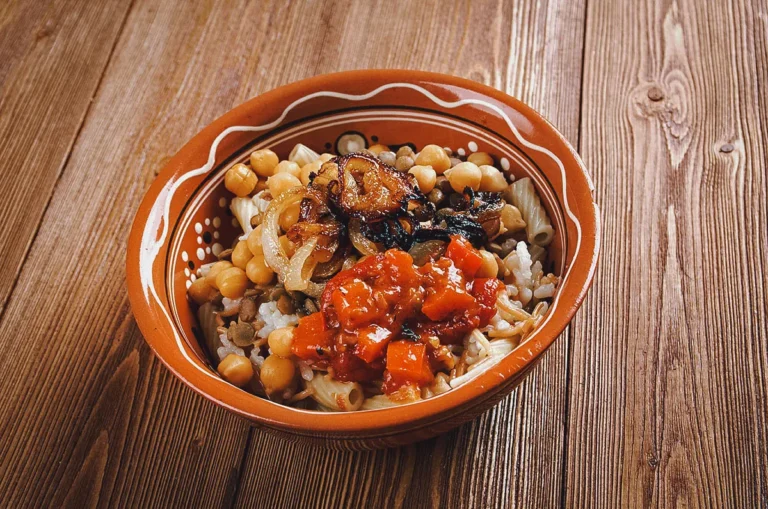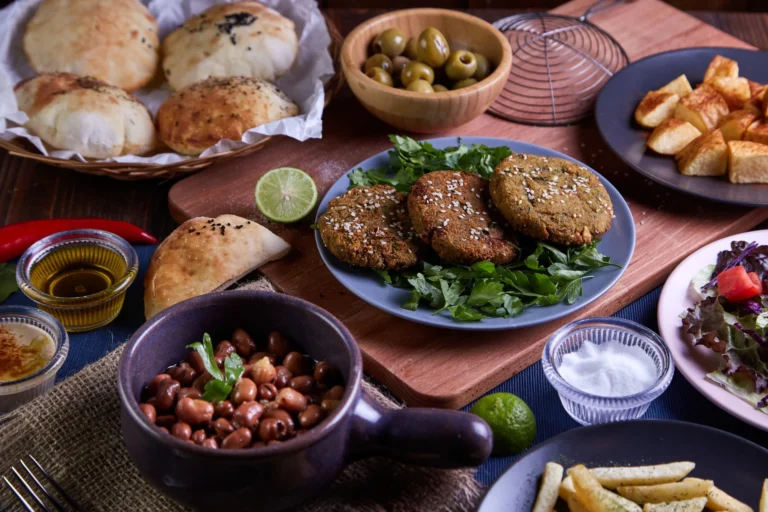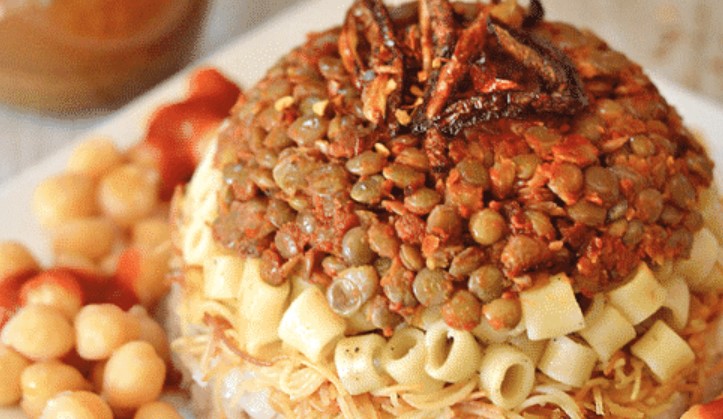Introduction to Egyptian Cuisine
Egyptian cuisine is a fascinating blend of ancient and modern traditions, influenced by the country’s long history and diverse cultural influences. Egyptian food is known for its rich flavors, unique spices, and hearty portions. The cuisine is an important part of Egyptian culture and is enjoyed by people all over the world.
Egyptian cuisine is typically characterized by its use of fresh ingredients, including vegetables, fruits, and grains. Herbs and spices are also an important part of the cuisine, with many dishes featuring garlic, cumin, coriander, and other flavorful seasonings. Egyptian cuisine is also known for its use of bread, which is typically eaten with almost every meal.
Ingredients used in Egyptian Cuisine
Egyptian cuisine is known for its use of fresh, locally sourced ingredients. Some of the most common ingredients used in Egyptian cuisine include cucumbers, tomatoes, onions, and eggplants. Fava beans and lentils are also popular ingredients in many dishes.
Herbs and spices are an important part of Egyptian cuisine. Some of the most commonly used spices include cumin, coriander, and mint. Other popular seasonings include garlic, lemon, and vinegar. Egyptian cuisine also makes use of a variety of nuts, including almonds and pistachios.
Egyptian Food Preparation Techniques
Egyptian cuisine features a variety of cooking techniques, including grilling, baking, and frying. Many dishes are slow-cooked and simmered for hours to achieve a rich, flavorful taste. Egyptian cuisine is also known for its use of marination, with many dishes featuring meat or fish that has been marinated in a blend of spices and seasonings.
Another popular technique in Egyptian cuisine is stuffing, where vegetables like eggplants or peppers are stuffed with a flavorful filling. Egyptian cuisine also features a variety of stews and soups, often made with a combination of vegetables, meat, and grains.
Traditional Egyptian Dishes
Many traditional Egyptian dishes are hearty, filling, and full of flavor. One of the most popular dishes is koshari, a dish made with a mixture of lentils, rice, macaroni, and chickpeas, topped with a spicy tomato sauce and fried onions.
Another popular dish is ful medames, a breakfast dish made with fava beans that are cooked slowly with garlic and lemon juice, served with bread and a variety of toppings like tomatoes, onions, and parsley.
Other popular dishes include molokhia, a stew made with jute leaves and served over rice, and mahshi, vegetables like eggplants or peppers that are stuffed with a flavorful filling of rice, herbs, and spices.
Influence of Other Middle Eastern Cuisines
Egyptian cuisine has been influenced by a variety of other Middle Eastern cuisines, including Lebanese, Syrian, and Turkish cuisine. This has resulted in the fusion of different cooking techniques, spices, and ingredients.
For example, shawarma, a popular Middle Eastern street food, can be found in Egypt, but it is prepared with a unique Egyptian twist, often served with a variety of toppings like pickled vegetables, herbs, and sauces.
Differences in Spices and Seasonings
While many Middle Eastern cuisines share similar ingredients and cooking techniques, Egyptian cuisine has a unique blend of spices and seasonings that sets it apart. Cumin, coriander, and mint are commonly used in Egyptian cuisine, giving dishes a distinct flavor.
Egyptian cuisine also features a variety of tangy and sour flavors, often achieved through the use of ingredients like lemon juice, vinegar, and sumac. Garlic is also a popular seasoning in Egyptian cuisine, adding a strong, savory flavor to many dishes.
Importance of Bread in Egyptian Cuisine
Bread is a staple in Egyptian cuisine, and many dishes are served with a side of bread. Egyptian bread is typically round and flat, with a chewy texture. One of the most popular types of bread is baladi bread, which is made from whole wheat flour and baked in a clay oven.
Bread is often used to scoop up sauces and dips, and is a key component of many dishes like koshari and ful medames.
Popular Egyptian Street Food
Egyptian street food is a vibrant and diverse scene, with a variety of dishes available throughout the country. One popular street food is taameya, also known as falafel, which is made with ground fava beans, herbs, and spices, then fried and served with salad and bread.
Another popular street food is koshari, a hearty mix of lentils, rice, macaroni, and chickpeas, topped with a spicy tomato sauce and fried onions.
Other popular street foods include shawarma, kebabs, and ful medames. Egyptian street food is known for its bold flavors, unique spices, and hearty portions, making it a must-try for anyone visiting the country.

